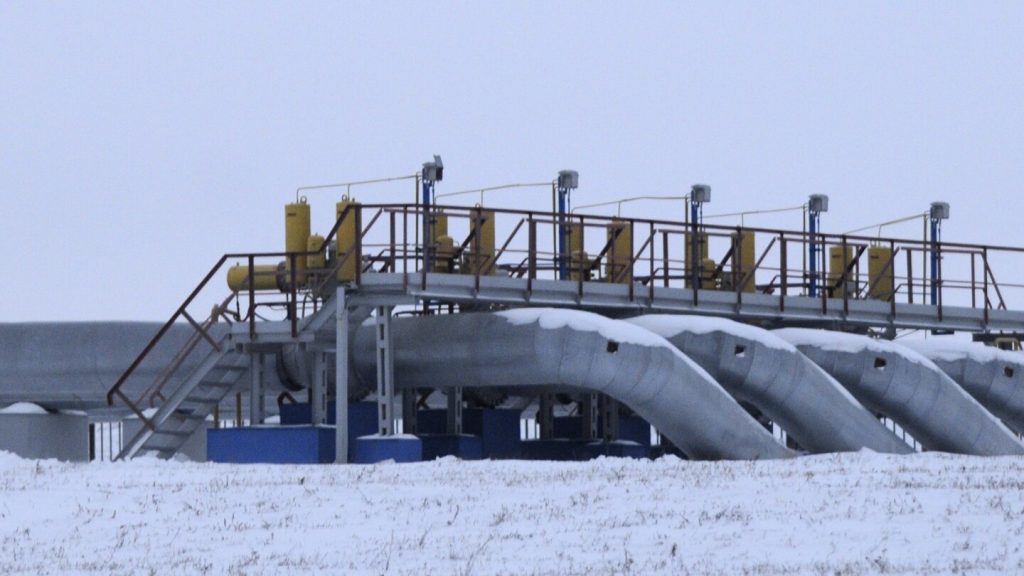Despite the ongoing conflict between Russia and Ukraine, Russian natural gas continues to flow through Ukraine’s pipeline network to customers in Europe. The gas originates from West Siberian gas fields, passing through Sudzha in Russia before crossing the Ukrainian border and entering the EU at the Ukraine-Slovakia border. This gas is crucial for generating electricity, powering industrial processes, and heating homes in Austria, Slovakia, and Hungary. Despite Ukraine’s recent actions in the Kursk region, gas continues to flow through the Sudzha measuring station without interruption.
Gas flow through the Sudzha measuring station remains consistent, with 42.4 million cubic meters passing through on a recent Tuesday. Ukraine’s gas transmission system operator confirms that this amount is in line with the average for the past 30 days. The control over the station is difficult to verify due to military secrecy and restricted access for observers and journalists. The agreement between Ukraine and Russia, which expires at the end of this year, ensures a steady flow of gas through Ukraine’s pipelines to Europe, with Gazprom earning money from the gas and Ukraine collecting transit fees.
While Russia cut off gas supplies through the Baltic and Belarus-Poland pipelines after the war began, the flow of gas through Ukraine has continued. This has caused some disruptions in Europe, leading to a reliance on liquefied natural gas imports from other countries. Despite plans to eliminate Russian gas imports by 2027, Europe remains partially dependent on Russian energy due to the economic benefits it provides. Austria, Slovakia, and Hungary, in particular, would face challenges in finding alternative gas supplies if the flow through Sudzha were to stop.
European countries have outlined plans to end imports of Russian fossil fuels entirely by 2027, but progress has been uneven. Some countries, such as Austria, have increased their reliance on Russian gas in recent years, while others have made efforts to reduce direct imports. European efforts to diversify energy supplies have included importing liquefied natural gas from countries like France and making deals with Turkey for gas imports from Russia. Despite these efforts, reducing the dependence on Russian gas remains a challenge for European countries facing high inflation and cost-of-living crises.
The future of Russian gas flows to Europe remains uncertain, with the European Union aiming to completely eliminate imports of Russian fossil fuels by 2027. Efforts to diversify energy supplies and reduce reliance on Russian gas have been met with mixed results, with some countries increasing their imports while others work to decrease direct reliance on Russian gas. The ongoing conflict between Russia and Ukraine continues to impact energy flows in Europe, highlighting the challenges of reducing dependence on Russian energy in the face of geopolitical tensions and economic constraints.


